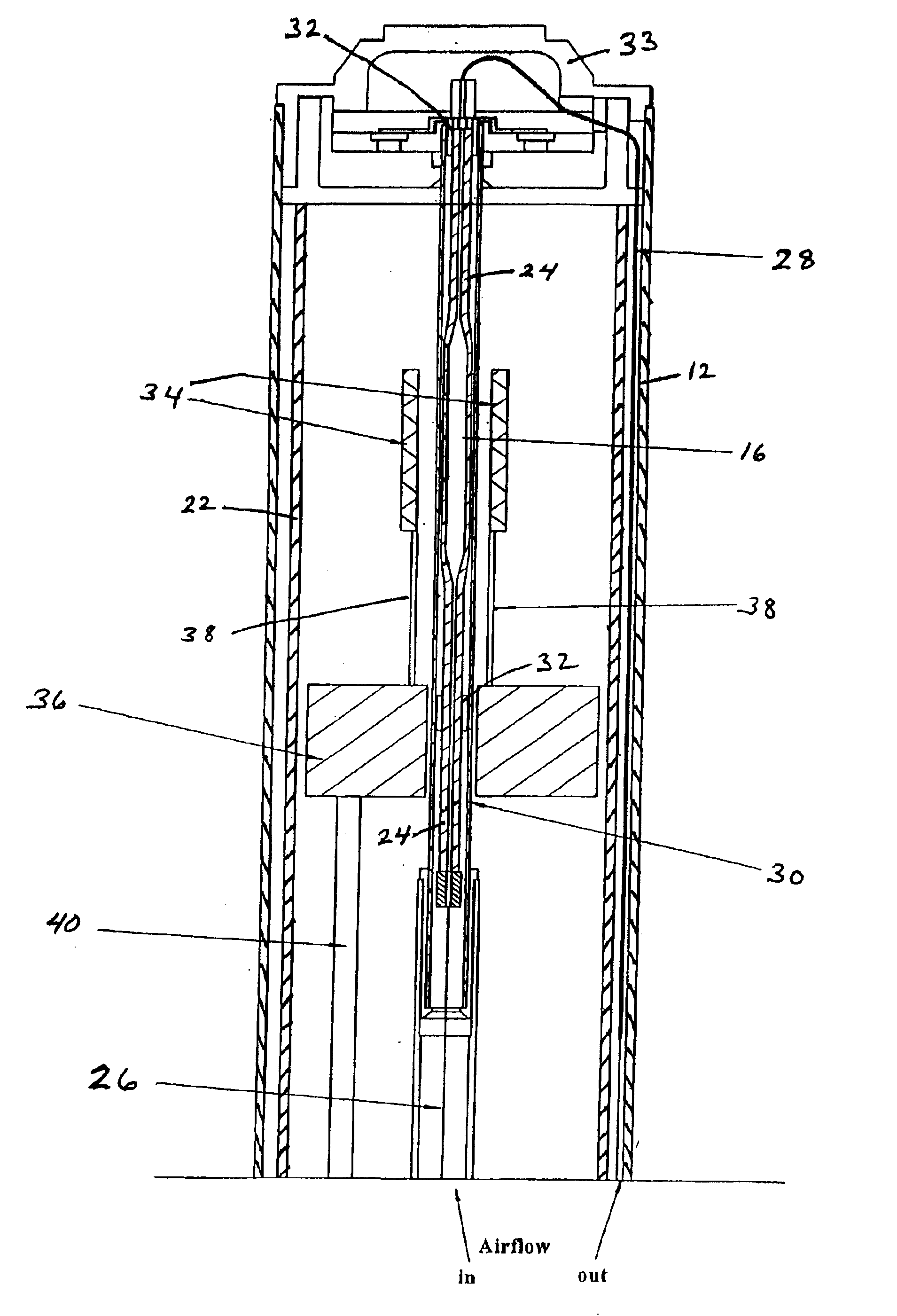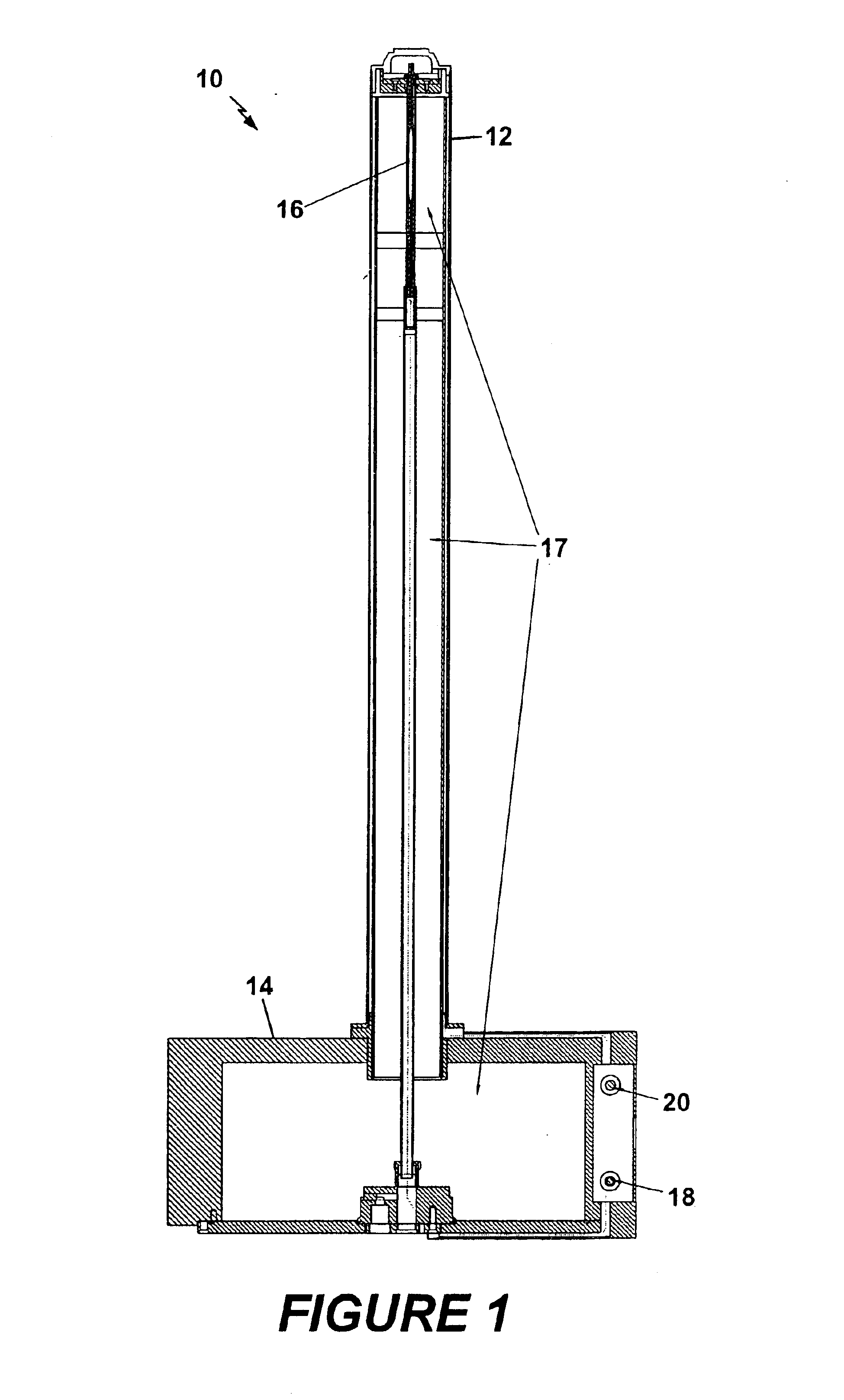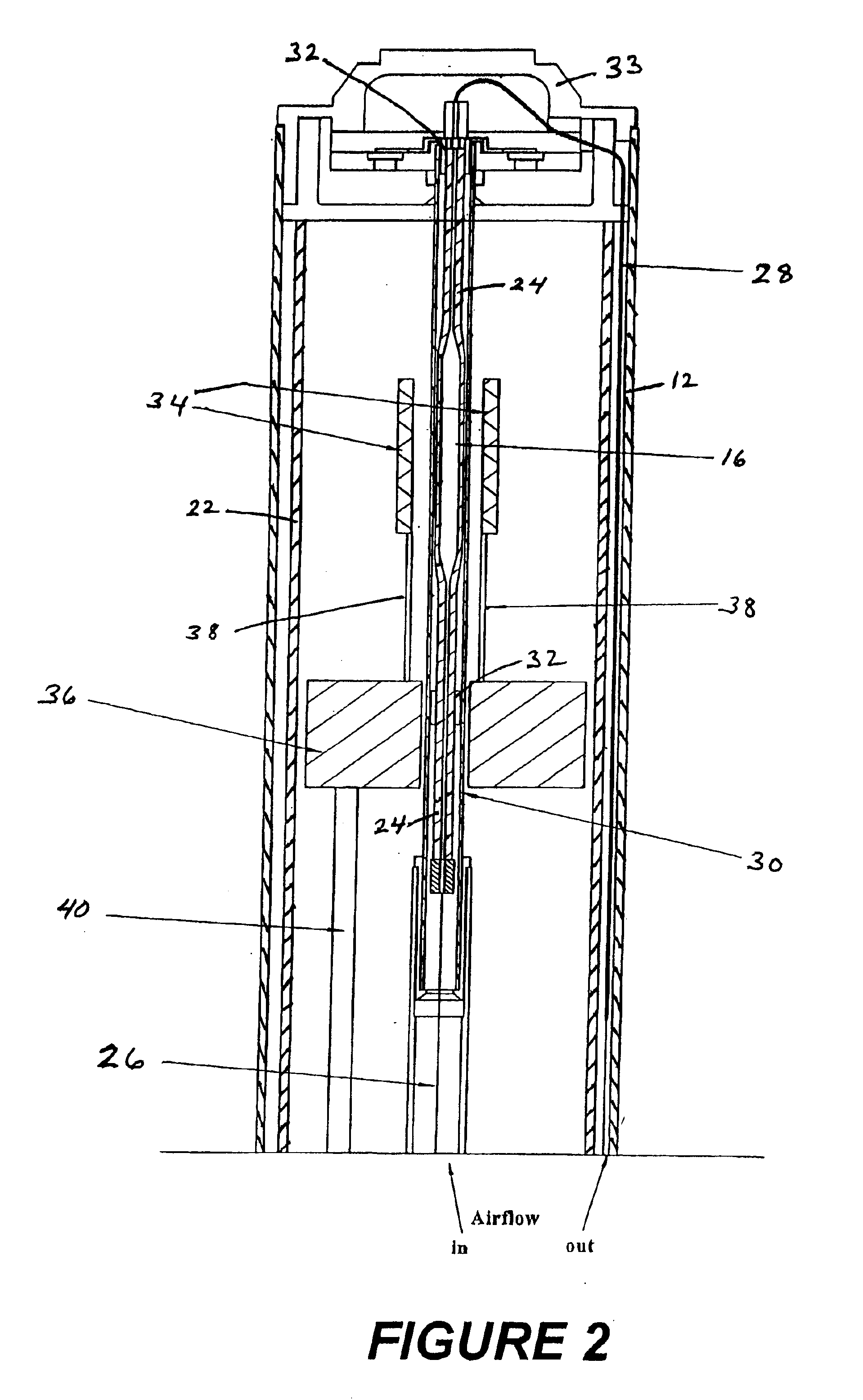Flow-through cryogenic NMR probe
a probe and cryogenic technology, applied in the field of nmr, can solve the problems of cross-contamination between samples and transfer capability
- Summary
- Abstract
- Description
- Claims
- Application Information
AI Technical Summary
Benefits of technology
Problems solved by technology
Method used
Image
Examples
Embodiment Construction
Shown in FIG. 1 is a cryogenic flow-through NMR probe 10 according to the present invention. The probe 10 has an outer casing 12 mounted to a base 14. Within the probe is a sample cell 16, which is surrounded by an NMR coil (not shown). The coil resides in one of the evacuated portions 17 of the probe, and is kept at a cold temperature via thermal conduction from a heat exchanger. The sample cell 16 is fed by a capillary that runs along a longitudinal axis of the probe, providing a flow of liquid sample solution to the sample cell from an inlet port 18. A similar capillary tube functions as a return, running from the top of the sample cell along the outer casing 12 to the base 14, and finally out outlet port 20.
The sample region of the probe is shown in more detail in FIG. 2. The outer casing 12, preferably cylindrical, may be constructed from a non-magnetic metal. Also constructed from a similar material is an inner casing 22. The inner casing is preferably also cylindrical, and se...
PUM
 Login to View More
Login to View More Abstract
Description
Claims
Application Information
 Login to View More
Login to View More - R&D
- Intellectual Property
- Life Sciences
- Materials
- Tech Scout
- Unparalleled Data Quality
- Higher Quality Content
- 60% Fewer Hallucinations
Browse by: Latest US Patents, China's latest patents, Technical Efficacy Thesaurus, Application Domain, Technology Topic, Popular Technical Reports.
© 2025 PatSnap. All rights reserved.Legal|Privacy policy|Modern Slavery Act Transparency Statement|Sitemap|About US| Contact US: help@patsnap.com



